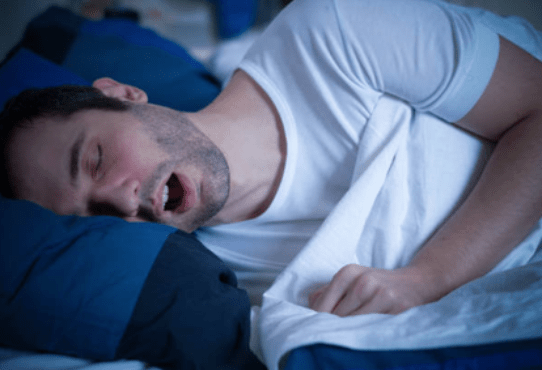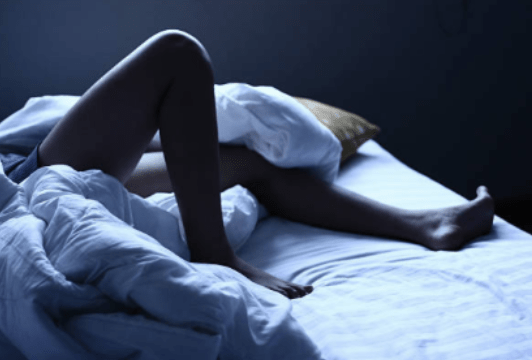Common Sleep Disorders
About 50% of the US population suffers from some form of sleep disorder
Insomnia: Impacts about 30% of the US Population
Insomnia is well-known to many Americans, and is often discussed when we have trouble sleeping for a night. About 10% of Americans hav chronic insomnia and 30% of Americans have short-term insomnia. Its common for stressful events to trigger sleep problems, but its problematic when this results in a repeated pattern of sleeplessness every night. But what exactly is clinical insomnia, and how is it treated? Insomnia refers to when individuals have difficulty falling asleep or staying asleep and is typically defined by regularly spending less than 85% of the time you are in bed asleep. In sleep science this is known as your sleep efficiency.
Some people have evening insomnia, which difficulties falling asleep while others have morning insomnia where they waking up in the middle of the night and are not able to fall back asleep, or wake up too early in the morning. The recommended treatment for insomnia is usually Cognitive Behavioral Therapy, and we made a guide overview of Cognitive Behavioral Therapy for Insomnia for you. You can also interact with our AI Chatbot Dr. Snooze and do some cognitive training to address maladaptive thoughts that can form around sleep. Please consult a medical professional if you think you have insomnia.
Sleep Apnea: Impacts about 7% of the US Population
Sleep apnea is a common disorder that involves difficulty breathing when asleep. The word “apnea” literally translates from the Latin to “without breathing.” A familiar symptom of sleep apnea is snoring, which occurs during the night when a person is gasping for air. Though snoring is common, just because you snore it doesn’t mean you necessarily have sleep apnea. Nonetheless, this gasping that causes snoring prevents healthy sleep, particularly because it reduces the time spent in restorative deep sleep (Carskadon & Rechtschaffen, 1994). The National Heart, Lung, and Blood Institute estimated in 2006 that one in fifteen people suffer from sleep apnea. Other indicators of sleep apnea include waking up tired, being overweight, the distribution of fat in the stomach and neck areas, menopause, and heredity. Recent population health studies have found that those with untreated sleep apnea have a five times higher morbidity rate than those with treated sleep apnea. (Nieto, Young, Lind, Shahar, Samet, et al., 2000). If you think you or someone you know might have sleep apnea, see a doctor and get the appropriate diagnosis and treatment. Through a collaboration with Wesper you can now get yourself diagnosed with sleep apnea from the comfort of your home. Enter code "SLEEPSPACE23" for 10% off!


Delayed Sleep Phase Syndrome: Impacts around 15%
Delayed sleep phase syndrome (DSPS) can be a preventable sleep problem that is widespread among adolescents. But for others this can be a chemical imbalance that can be difficult to address. This syndrome describes the inability to fall asleep and wake up at preferred times. For instance, teens naturally have their sleep cycle shift towards later in the night. So teens often find themselves unable to fall asleep until late in the night and unable to wake up with their alarm in the morning. Delayed sleep phase syndrome can be caused by erratic sleep habits that confuse your body and prevent it from developing the desired times of falling asleep and waking up. On the other hand, erratic sleep habits can also be a symptom of DPSP where even sticking to a schedule can become quite difficult if the issue is chemically induced. The syndrome is often characterized by staying up late and sleeping in on weekends, then waking up early on weekdays and taking an afternoon nap. This erratic schedule can make it extremely difficult to wake up in the morning. Treatments are behavioral, and include becoming more aware of the importance of consistent sleep patterns and modifying your sleep schedule appropriately. Click here for more details about
Narcolepsy: Impacts <.1% of Americans
Narcolepsy is a less common sleep disorder characterized by excessive tiredness even after getting an adequate amount of sleep, and uncontrollable episodes of falling asleep at inappropriate times (Carskadon et. al, 1994). This behavior is frequent, often occurring several times a day. Those who suffer from narcolepsy also undergo frequent awakenings during nighttime sleep. Some narcoleptics experience the sudden loss of muscle tone, which can cause physical collapse with retained consciousness. This phenomenon often occurs in response to highly emotional situations. Other symptoms of narcolepsy include the temporary inability to talk or move immediately after waking up, vivid and often frightening hallucinations, and, more commonly, appearing conscious while not remembering any events that occur. If you think that these symptoms apply to you, see a physician immediately because this disorder can be dangerous.
Sleep Inertia and Short Sleep: Impacts 40% of US Population
Sleep inertia, or in other words, the brain fog after waking up and grogginess you feel in the morning, is due to the brain functioning differently than normal during sleep, especially deep sleep. Brain fog occurs as the brain tries to replenish cerebral blood flow. Anything that brings the brain activity to normal may reduce sleep inertia and help you feel more refreshed in the morning.
Restless Leg Syndrome: Impacts 4-10% of US Population
Restless leg syndrome is characterized by an irresistible urge to move the body in order to stop an uncomfortable or odd sensation, often described as a burning, itching, or tickling. It usually affects the legs, but can also occur in the arms or torso. It is estimated that restless leg syndrome affects seven to ten percent of Americans, with approximately two percent of the population experiencing severe symptoms. Restless leg syndrome occurs in females twice as often as in males, and is more common with those who are Caucasian, iron deficient, pregnant, elderly, or obese. Some cancers, depression, and a sedentary life style have also been linked to restless leg syndrome. This syndrome is treatable, and can often be assuaged by a healthy lifestyle as well as moving around once you begin to experience symptoms in the night. Restless leg syndrome can also be treated with medicine. If you think you have this disorder, you should consult with your physician.